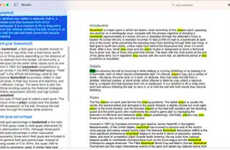
Google Books Ngram Viewer Shows Cultural Trends
Summer Luu — December 21, 2010 — Business
References: ngrams.googlelabs & huffingtonpost
Google and scientists from Harvard University have coined the term “culturomics” in its latest launch of Google Books Ngram Viewer.
The database consists of more than 5.2 million digital books published between 1500 and 2008 (fiction and non-fiction). Users can type in a word and track its popularity, how frequently its been used and its changes in usage throughout history. The Google Books Ngram Viewer search tool quantifies the evolution of words and language and depicts history’s cultural trends.
The database consists of more than 5.2 million digital books published between 1500 and 2008 (fiction and non-fiction). Users can type in a word and track its popularity, how frequently its been used and its changes in usage throughout history. The Google Books Ngram Viewer search tool quantifies the evolution of words and language and depicts history’s cultural trends.
Trend Themes
1. Culturomics - Explore the cultural trends and evolution of words and language through digital books.
2. Ngram Viewer - Track the popularity and usage changes of words throughout history using Google Books Ngram Viewer.
3. Quantifying Language - Quantify the usage and trends of words and language to gain insights into cultural shifts.
Industry Implications
1. Digital Publishing - Digital publishers can utilize culturomics and Ngram Viewer to analyze language and cultural trends in their publications.
2. Data Analytics - Data analytics companies can leverage the vast amount of data from Google Books Ngram Viewer to provide insights on historical language usage and cultural trends.
3. Academia - Researchers and academic institutions can utilize Ngram Viewer to study the evolution of words and language in different fields or historical periods.
0.9
Score
Popularity
Activity
Freshness























